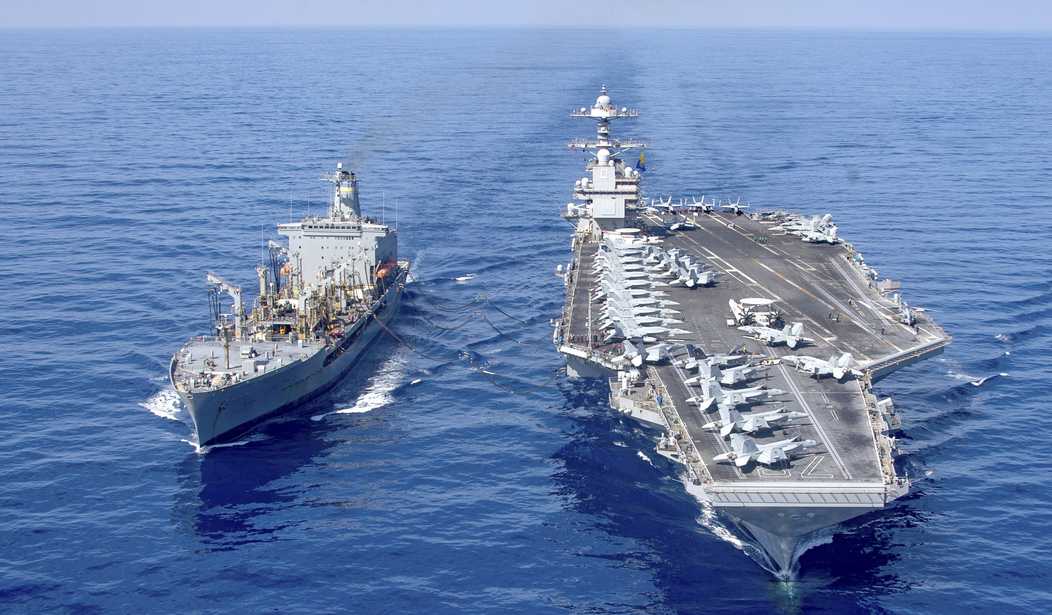The US has increased its military presence in the Middle East region by quite a bit. Not one, but two aircraft carrier battle groups rushed to the area. The Gerald R. Ford, the US’ newest carrier, is currently in the eastern Mediterranean, while the Dwight D. Eisenhower just transited the Suez Canal and is in the Red Sea.
Neither is in the Persian Gulf, close enough for Iran to directly strike. The US did send an attack submarine to the Gulf as a message to Iran–a platform that would be very difficult to counter, unlike an aircraft carrier.
A lot of people may be wondering why, if the US isn’t going to intervene directly in the conflict going on in Gaza, we need to have the carrier battle groups forward deployed in this manner. Does this mean that the US might get directly involved?
Almost certainly not. It is not Hamas or Hezbollah to whom the message is being delivered; it is Iran.
Iran's proxy militias must be viewed as more than the sum of all their parts, writes Seth Frantzman. https://t.co/UCHIPOu8rE
— National Interest (@TheNatlInterest) November 7, 2023
First of all, you need to understand that Israel’s war with Hamas is a front between Iran’s war with Israel and the United States, and only one front of that war. Since the war in Gaza began Iranian proxies have been attacking US assets all over the region, with little pushback from the United States up to now. As far as we know the US has only struck back once, attacking a base in Syria.
Iran has been able to knit together several proxy groups in the region to attack Israel in the wake of Hamas’ October 7 attack on Israel. This has included the Iran-backed Houthis in Yemen, as well as Hezbollah and militia groups in Iraq and Syria. The militias in Iraq and Syria have concentrated their attacks on U.S. forces, carrying out nearly thirty attacks in the first month since the Hamas attack. Iran now shows that it can unite disparate forces in the region, across thousands of miles, to carry out attacks. While Iran has played a role in backing these groups for decades, its support has now reached a pinnacle of operational coordination. Although Iran has tried to do this in the past, the Hamas attack has set in motion a new regional dilemma.
In other words, the United States isn’t volunteering to get involved in Israel’s war; Iran has already begun a war with the US through its proxies. In fact, Iran has been attacking US forces and assets for years in the Middle East and is just ramping up the attacks.
The US forces aren’t there to back Israel, although they may have that secondary effect, but to deter Iran from attacking the US forces and assets in the Middle East. So far it doesn’t appear to be working, for obvious reasons. Deterrants must be credible, and in order to be credible you have to be willing to use them. One strike on a base in Syria is apparently not enough to keep Iran quiet, although perhaps they are trying to stay below a threshold beyond which they expect the US to strike.
Iran wants to use this war to bring together its proxies. The fact that it has also unleashed them on U.S. forces in Iraq and Syria shows that, for Iran, this is already a regional conflict. Iran sees Israel and the United States as linked and is trying to foment a regional war against the two countries. This upends the stability in the region that appeared to be emerging in the wake of the defeat of ISIS. Iran’s war against Israel has now reached a new stage, and this affects the whole region. Iran’s proxy militias will need to be viewed as more than the sum of all their parts in the future. Iran’s ability to operationalize them all over the month that began with the October 7 attacks is evidence of how Iran has succeeded in uniting all these groups.
I am not privy to all the information available to our military planners or diplomats, so I hesitate to be too critical of their moves at this point in the conflict. Iran may be interested in a regional war, but neither Israel nor the US wants to engage in one. Israel’s interest at the moment is rooting out Hamas, and the US seems supportive at the moment but wavering due to domestic pressure from the Left flank of the Democrat Party–something that seems to have taken the administration by surprise. Even within the administration, there appears to be a split between hawks and doves, and the lower levels of the State Department appear to be agitating for a cease-fire. At least according to the media.
A larger war would likely be a disaster, but leaving Hamas in place would be an Iranian victory and a continuing thorn in the side of Israel, leaving it vulnerable to a two-front war at a later point.
Not that Israel will come out stronger than before the war. The blow from 10/7 goes deeper than the casualties; Israel’s government is weaker, its standing in the world has been hurt, and a Hamas-free Gaza will still be a festering sore. Just not one with an organized military force.
The problem, as always, is Iran most of all. Biden’s appeasement of Iran was always a mistake, and we are reaping what he sowed.








Join the conversation as a VIP Member